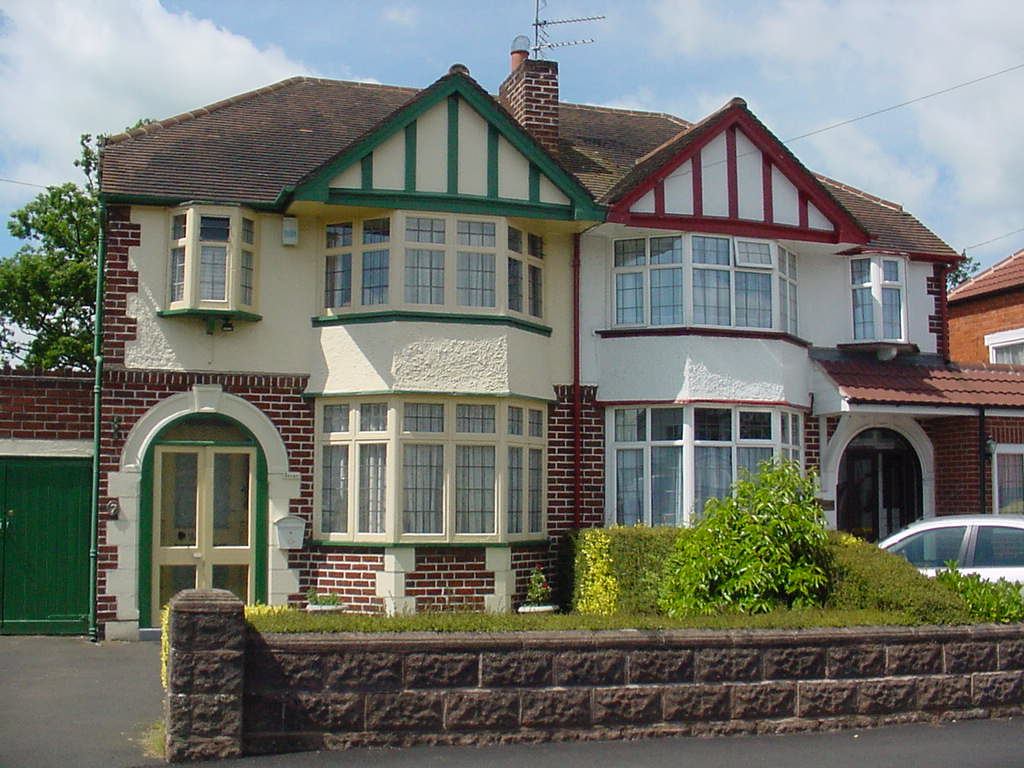#5290. Dual-colored facade of a 1930s British semi-detached house with Tudor Revival elements
This is an excellent example of a traditional British semi-detached house likely dating from the interwar period, presumably the 1930s. The facade presents an interesting architectural solution: two mirrored halves of the building are highlighted with contrasting colors – green and red on the upper elements of the gables. The architectural style can be attributed to a simplified Tudor Revival, popular in British suburban construction of that era.
The facade is characterized by expressive bay windows on both halves of the house, with multi-section windows creating abundant natural lighting for the interior spaces. Decorative gables with characteristic vertical elements imitate half-timbered construction, referencing traditional English architecture. The brickwork of the lower tier contrasts with the plastered surface of the second floor, which was a typical technique for creating visual interest.
Arched entrance portals with brick framing add elegance to the facade. The roof is made of traditional tiles, and a red brick chimney completes the composition. A small front garden with low shrubs is laid out in front of the house, separated from the street by a stone retaining wall, which is characteristic of British suburban development. These architectural solutions make the building both typical and distinctive example of residential architecture of its time.
